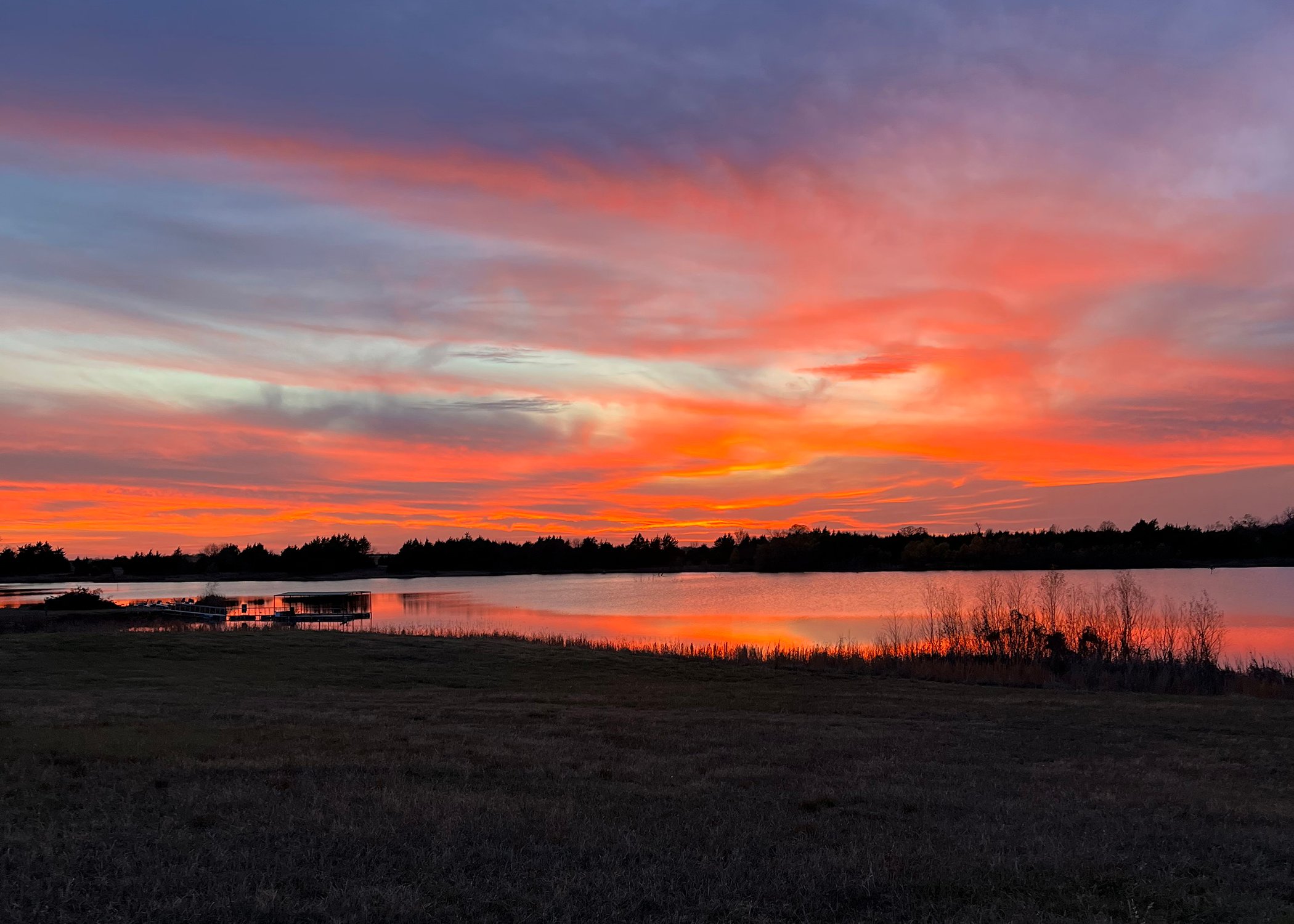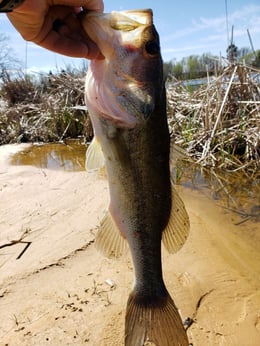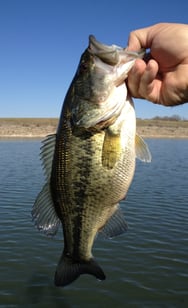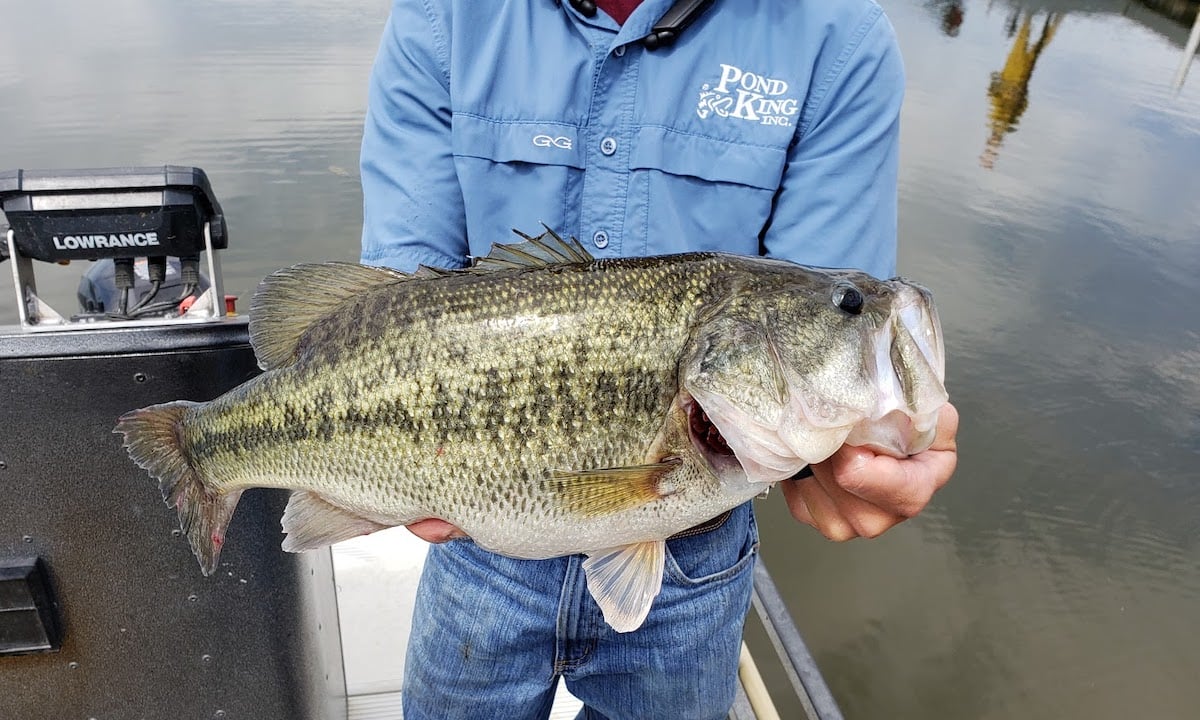Managing for trophy bass fishing is always a goal toward the top of the list for many pond owners, and why shouldn't it be? Knowing you can go down to your private pond and have a decent chance to catch that bass-of-a-lifetime is an awesome feeling! But managing a fishery for trophy bass can also be very challenging. Growing a bass trophy into double-digit sizes is no easy task, and requires a lot of time, effort and pond management. It is easy to make mistakes along the way, especially when you are trying to implement management plans on an already established lake. Here is a look at some common mistakes to avoid when your pond management goals include trophy bass production.
Managing for Trophy Bass in Your Pond: What It Takes and Mistakes to Avoid
Mistake #1: Not Considering the Size of Your Lake
Why Lake Size Matters in Trophy Bass Management
When it comes to growing trophy bass, the size of your lake plays a major role. Producing double-digit bass in a small 1–2 acre pond is significantly more challenging than in a lake that spans 5 acres or more. Larger bodies of water can sustain a higher overall biomass, which means they can support more fish—both predators and forage species.
In contrast, smaller lakes are more prone to issues like overcrowding and intense competition among Bass, which slows growth and puts strain on forage populations. Bigger lakes offer more stability, making it easier to manage population swings and maintain a healthy ecosystem. It’s also important to remember that not all Bass have the genetic potential to reach 10 pounds, so combining the right lake size with selective harvesting and proper stocking is key.

It also takes the proper genetic composition and efficient predatory behavior for a bass to reach trophy size. Within a larger population, the odds of finding individuals with both of these traits are much higher compared to smaller populations. For those building a new pond or lake, it’s recommended to construct the largest body of water your budget and watershed will allow. This maximizes the potential for long-term bass growth and trophy production.
Mistake #2: Not Harvesting - The Importance of Annual Bass Harvesting
Why Catch-and-Release Alone Can Hurt Your Fishery
Failing to conduct an annual Bass harvest is one of the most common mistakes in lake and pond management. While catch-and-release has long been promoted as a way to improve fisheries, relying on it exclusively often leads to Bass overpopulation. Every ecosystem can only sustain a limited number of predators, and exceeding that balance creates problems for all species within the pond.
As predator numbers increase, competition among Bass intensifies. This intraspecific competition reduces growth rates because there is less available forage per fish. In many cases, the increased pressure on forage species becomes unsustainable, eventually resulting in a noticeable decline in forage abundance.
Using Selective Harvest to Restore Balance
To prevent Bass overpopulation, an annual harvest of 10–20 pounds of Bass measuring 14 inches and under is generally recommended. This approach thins out the smaller, more aggressive size classes, reducing competition and allowing larger Bass to continue growing.
If an overabundance of Bass is suspected, conducting an electrofishing survey is the most effective way to evaluate the population. This type of survey provides accurate data to determine the proper selective harvest needed to restore balance and support long-term trophy Bass production.

Mistake #3: Too Many Predator Species - Managing Predator Balance for Trophy Bass Success
Predator Load and Ecosystem Limits
As mentioned earlier, every pond or lake has a biological carrying capacity for predators. When the number of predator species increases, the population size of each individual species must decrease to remain sustainable. For example, if a lake can support 100 pounds of predators, that biomass could consist of one species or be divided—such as 33 pounds each of three different predator species. However, the more predator species you introduce, the greater the risk of interspecific competition, which can hinder growth and reduce effectiveness for trophy Bass management.
Focus on Bass and Eliminate Undesirable Species
If your goal is to raise trophy Bass, it is strongly recommended that you avoid stocking other predator species alongside them. By limiting the system to Bass alone, you allow for a larger, healthier Bass population with reduced competition for food and space.
Additionally, all undesirable species should be actively removed. These include, but are not limited to: Green Sunfish, Bullhead or other Catfish, Crappie, and Gar. These species compete with Bass for resources or directly disrupt the ecosystem, making it harder to maintain the balance needed for growing trophy-class fish.
-
 Green Sunfish
Green Sunfish -
 Gar
Gar -
 Crappie
Crappie
Mistake #4: Not Supplementing F1 Genetics - The Importance of Supplementing F1 Largemouth Bass

Why F1 Bass Are Ideal for Trophy Fisheries
F1 Largemouth Bass are prized in trophy pond management for their hybrid vigor—a combination of the fast growth traits from their Florida strain parent and the cold tolerance from their Northern strain parent. This unique blend makes F1 Bass especially effective in a wide range of climates and ideal candidates for stocking in trophy Bass fisheries.
Avoiding Genetic Decline Through Regular Stocking
One of the most common mistakes in managing F1 Bass fisheries is failing to supplement the population every 4–6 years. Over time, subsequent generations (F2, F3, F4, etc.) begin to lose the benefits of hybrid heterosis, resulting in slower growth and reduced performance.
To maintain strong genetics and continue realizing the growth benefits of F1 Bass, it’s important to regularly introduce new F1 juveniles. These stockings help preserve a high concentration of Florida-strain alleles in the gene pool, reinforcing hybrid vigor and supporting long-term trophy Bass production.
Mistake #5: Not Fertilizing - Why Fertilizing Is Essential for Healthy Pond Management
Boosting the Food Chain from the Bottom Up
In lakes over 2 acres, especially in regions like Texas, fertilizing is a critical management practice. Applying fertilizer increases the nutrients available for phytoplankton, the microscopic plants that serve as the foundation of the aquatic food chain. By stimulating a phytoplankton bloom, you're effectively feeding the entire ecosystem—supporting better growth for forage fish and, ultimately, predators like Bass.
Fertilized lakes are more productive and can sustain a greater biomass of healthy fish, making fertilization a key factor in maximizing the potential of your fishery.
The Risks of Skipping Fertilization
Failing to fertilize comes with two major consequences. First, without phytoplankton blooms, water clarity increases, allowing sunlight to penetrate deeper. This promotes the overgrowth of nuisance aquatic vegetation, which can disrupt the balance of your ecosystem and hinder fish movement and oxygen levels.
Second, not fertilizing means underutilizing your lake's productivity. Without added nutrients to boost phytoplankton and forage production, there’s less food available for both forage species and top predators. The result is a less efficient food chain and slower growth rates for all fish.
Ready to Grow Trophy Bass? Contact Pond King for Expert Guidance
Implementing management practices that address these often overlooked aspects can dramatically improve your fishery and put you on the path to growing true trophy Bass.
Be sure to explore our other blogs on trophy Bass management to make sure you're covering all the essential steps for proper pond management.
Have questions about your lake or pond? Want to avoid common mistakes and optimize your fishery? Contact us for personalized advice from the Pond King team.
We'll see y'all down at the pond.




